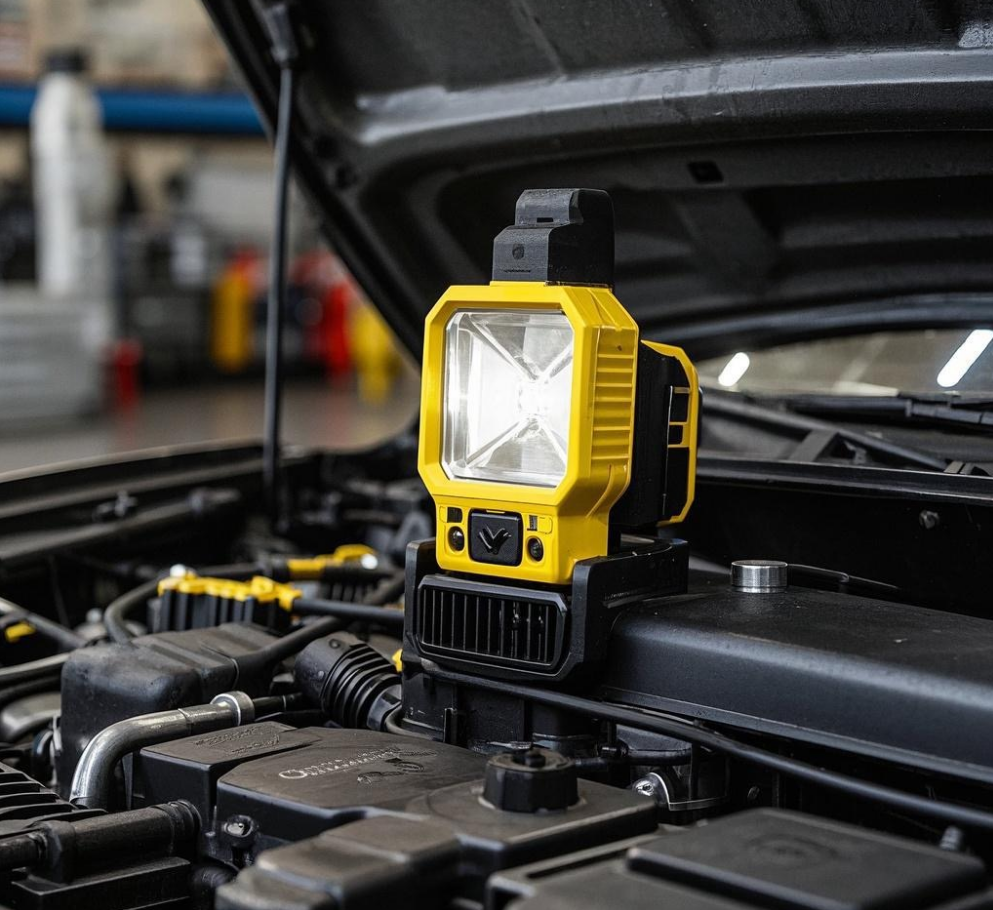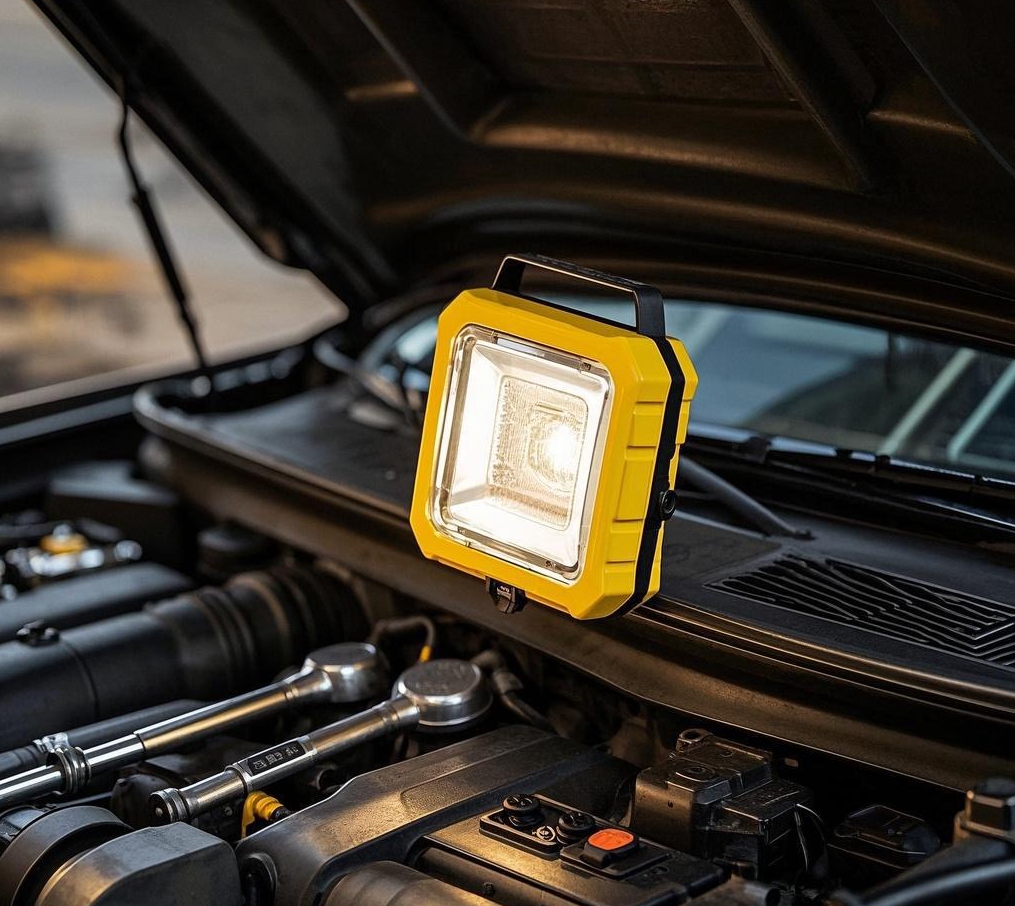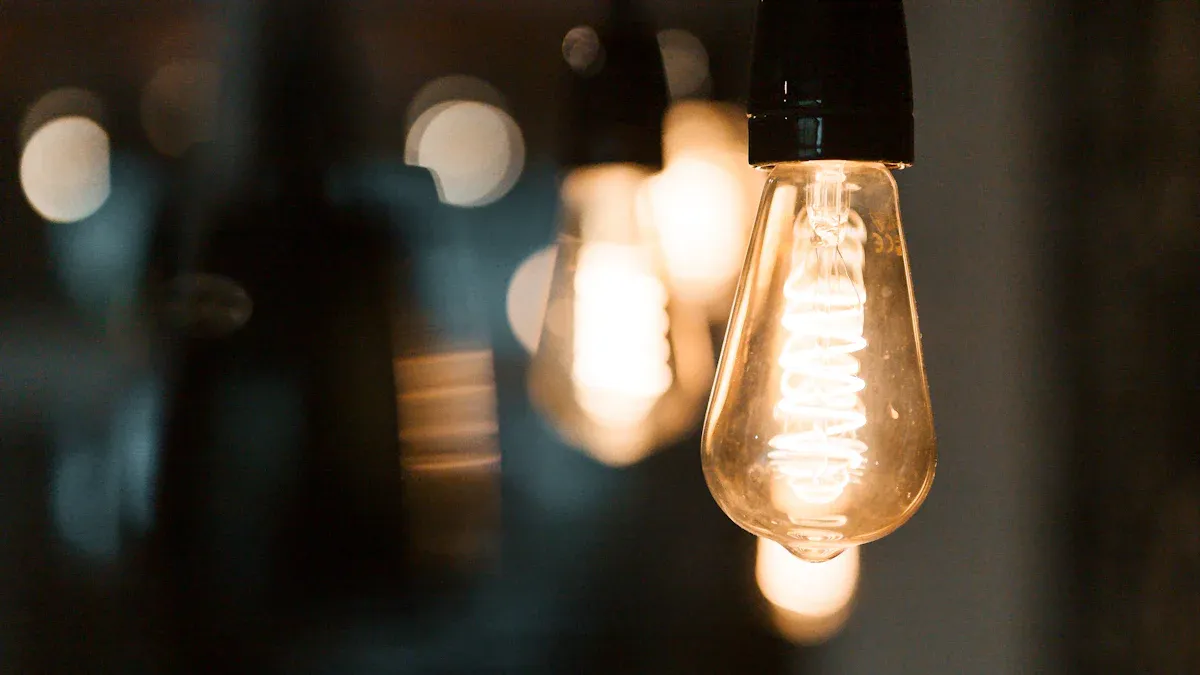
Factories rely on efficient lighting systems to maintain productivity and safety. Over the past decade, lighting technology has advanced significantly. Facilities transitioned from traditional lighting to basic LED systems, followed by the integration of smart controls and sensors. Today, IoT-enabled lighting networks dominate, offering automated solutions tailored to specific tasks. Magnetic work lights, with their portability and targeted illumination, represent a modern approach to addressing diverse factory lighting needs. These advancements ensure that factories can adapt to changing operational demands while optimizing energy use and performance.
Key Takeaways
- Magnetic work lights are easy to move and use. They work well in factories where tasks change often.
- Hanging work lights light up big areas evenly. This helps workers see better and stay safe.
- Think about the workspace and tasks before picking magnetic or hanging lights. This helps make lighting work better.
- Magnetic lights are fast to set up without tools. Hanging lights take more time to install but stay in place longer.
- Using both types of lights together can be helpful. It makes work easier and safer in different factory situations.
Magnetic Work Lights: Pros and Cons

Advantages of Magnetic Work Lights
Flexible Placement: Easily attachable to any metal surface for targeted lighting.
Magnetic work lights excel in adaptability. Their magnetic bases allow them to attach securely to metal surfaces, enabling precise illumination where needed. This feature proves invaluable in factories with machinery or metal structures, as workers can position the light exactly where tasks demand.
Portability: Lightweight and easy to reposition as needed.
The lightweight design of magnetic work lights enhances their portability. Workers can easily carry them between workstations or projects. This portability ensures that these lights remain a practical choice for dynamic factory environments where tasks frequently shift.
Compact Design: Ideal for tight spaces or detailed tasks.
Their compact size makes magnetic work lights suitable for confined spaces. For instance, automotive professionals often use them to illuminate engine compartments. Adjustable heads further enhance their utility, allowing workers to direct light precisely, even in challenging conditions.
Quick Setup: No permanent installation required, saving time.
Magnetic work lights eliminate the need for complex installations. Workers can deploy them instantly without tools, saving valuable time. This feature makes them particularly effective for temporary setups or emergency situations.
Tip: Magnetic work lights provide consistent lighting that minimizes shadows, reducing the risk of errors or accidents during detailed tasks.
Disadvantages of Magnetic Work Lights
Metal Surface Dependency: Limited to areas with metal surfaces for attachment.
While magnetic work lights offer flexibility, they depend on metal surfaces for attachment. This limitation can restrict their use in areas without suitable surfaces, such as wooden or plastic workstations.
Potential Instability: May slip on uneven or dirty surfaces.
Dirty or uneven surfaces can compromise the stability of magnetic bases. In high-vibration environments, the risk of slipping increases, potentially disrupting work or causing safety concerns.
Focused Lighting: Provides limited coverage compared to broader lighting solutions.
Magnetic work lights excel in task-focused illumination but may struggle to cover large areas. Their concentrated beams are ideal for precision tasks but less effective for general workspace lighting.
Durability Issues: Magnets may weaken over time or fail in high-vibration environments.
Prolonged exposure to vibrations or harsh conditions can weaken the magnets. Despite their durability in most scenarios, this potential drawback may affect their long-term reliability in demanding factory settings.
| Feature | Description |
|---|---|
| Durability | Built to withstand tough conditions like dust, impact, and moisture, ensuring reliable performance. |
| Safety | Reduces the risk of accidents by providing consistent lighting, enhancing visibility in low-light areas. |
| Versatility | Adjustable angles and portability make them suitable for various tasks in different environments. |
Magnetic work lights remain a versatile and practical solution for factories. Their portability, compact design, and ease of use make them indispensable for precision tasks. However, understanding their limitations ensures they are used effectively in the right scenarios.
Hanging Work Lights: Pros and Cons

Advantages of Hanging Work Lights
Wide Coverage: Effective for illuminating large areas or entire workspaces.
Hanging work lights excel in providing broad illumination, making them ideal for large industrial spaces. Their ability to be positioned at various heights allows light to spread evenly across work areas. This minimizes shadows and ensures consistent visibility, which is crucial for maintaining productivity and safety in factories. Additionally, LED technology enhances their efficiency by delivering reliable lighting while consuming less energy.
| Evidence Type | Description |
|---|---|
| Energy Efficiency | LED work lights consume significantly less electricity, leading to cost savings in large facilities. |
| Longevity | The long lifespan of LEDs reduces the frequency of replacements, minimizing maintenance and downtime. |
| Safety Features | Low heat emission of LEDs decreases the risk of burns or fire hazards, enhancing safety in industrial settings. |
| Consistent Illumination | LEDs provide reliable lighting that improves visibility for various tasks, suitable for both focused and general illumination. |
Stable Installation: Securely fixed once installed, reducing the risk of displacement.
Once installed, hanging work lights remain securely in place, even in high-vibration environments. Their heavy-duty construction, often featuring metal cages, ensures stability and protection against impacts. With a lifespan of up to 50,000 hours, these lights reduce the need for frequent replacements, saving time and resources.
- Long Lifespan: 50,000 hours, reducing replacement and maintenance time.
- Excellent Protection: IP65 waterproof technology and 6000V surge protection ensure durability in various environments.
- Reliable Construction: Heavy-duty metal cage provides 360-degree protection against impacts and vibrations.
Versatile Mounting Options: Can be hung from hooks, chains, or cables.
Hanging work lights offer flexibility in installation. They can be mounted using hooks, chains, or cables, adapting to different factory layouts. This versatility ensures compatibility with various setups, whether for temporary or permanent use.
| Feature | Details |
|---|---|
| Lumens | 5,000 |
| Runtime | Up to 11 hours |
| IP Rating | IP54 |
| Mounting Options | Freestanding, Tripod, Hanging |
Durability: Designed for long-term use in industrial environments.
Hanging work lights are built to withstand harsh conditions. Their robust construction, combined with features like IP65 waterproofing and impact resistance, ensures reliable performance in demanding environments. These lights are designed to endure vibrations, moisture, and dust, making them a dependable choice for factories.
- Built for harsh environments with heavy-duty construction.
- IP65 waterproof design ensures durability in damp conditions.
- 360-degree protection from impacts and vibrations.
- Long lifespan reduces maintenance and replacement needs.
Disadvantages of Hanging Work Lights
Fixed Positioning: Lack of mobility and flexibility after installation.
Hanging work lights remain stationary once installed, limiting their adaptability. This fixed positioning can hinder their effectiveness in dynamic work environments where tasks and lighting needs frequently change.
Time-Intensive Setup: Requires effort and tools for proper installation.
Installing hanging work lights demands time and tools, which can delay operations. Workers must ensure proper placement and secure mounting, making the setup process more labor-intensive compared to portable lighting solutions.
Shadowing Issues: Overhead placement may create shadows in certain areas.
While hanging lights provide broad coverage, their overhead positioning can sometimes cast shadows in hard-to-reach areas. This may require additional lighting solutions to ensure complete visibility for detailed tasks.
Space Limitations: May interfere with machinery or equipment in low-ceiling spaces.
In factories with low ceilings, hanging work lights can obstruct machinery or equipment. Their placement must be carefully planned to avoid disruptions to workflow or safety hazards.
Comparison: Choosing the Right Work Light for Your Factory
Key Differences Between Magnetic and Hanging Work Lights
Mobility: Magnetic work lights are portable, while hanging lights are stationary.
Magnetic work lights offer unmatched portability. Workers can easily reposition them to suit changing tasks or environments. This flexibility makes them ideal for dynamic factory settings. In contrast, hanging work lights remain stationary after installation. While this ensures stability, it limits their adaptability in fast-paced or evolving workspaces.
Coverage: Hanging lights provide broader illumination; magnetic lights are more focused.
Hanging work lights excel in illuminating large areas. Their wide coverage ensures consistent lighting across expansive factory floors. On the other hand, magnetic work lights deliver focused beams, making them better suited for precision tasks. This distinction highlights their complementary roles in addressing different lighting needs.
Ease of Installation: Magnetic lights are quicker to set up, whereas hanging lights require more effort.
Magnetic work lights require no tools or complex setups. Workers can attach them to metal surfaces instantly, saving time during installations. Hanging work lights, however, demand more effort. Proper installation involves securing them with hooks, chains, or cables, which can be time-intensive but ensures long-term stability.
Durability: Hanging lights are generally more robust for long-term use.
Hanging work lights are designed for durability. Their heavy-duty construction withstands harsh industrial conditions, including vibrations and moisture. Magnetic work lights, while durable, may face challenges in high-vibration environments where magnets could weaken over time. This makes hanging lights a better choice for permanent installations.
Magnetic work lights and hanging work lights serve distinct purposes in factory environments. Magnetic work lights excel in portability and flexibility, making them ideal for precision tasks and temporary setups. Hanging work lights, on the other hand, provide stable, wide-area illumination, ensuring consistent lighting for large spaces. Choosing the right option depends on specific factory needs, such as task requirements and workspace layout. Combining both types can create a versatile lighting solution, enhancing productivity and safety across various applications.
FAQ
What are the key factors to consider when choosing between magnetic and hanging work lights?
Evaluate the workspace layout, task requirements, and lighting needs. Magnetic lights suit precision tasks and temporary setups, while hanging lights excel in large-area illumination and permanent installations. Consider durability, mobility, and ease of installation for optimal results.
Can magnetic work lights function in non-metal environments?
Magnetic work lights require metal surfaces for attachment. In non-metal environments, users can place them on flat surfaces or use additional mounting accessories to secure them. However, their effectiveness may decrease without proper attachment.
Tip: Use adhesive-backed metal plates to create attachment points for magnetic lights in non-metal areas.
Are hanging work lights energy-efficient?
Yes, most hanging work lights use LED technology, which consumes less energy while providing bright, consistent illumination. This efficiency reduces electricity costs and minimizes the need for frequent replacements, making them a cost-effective choice for factories.
How do magnetic and hanging work lights handle harsh factory conditions?
Hanging work lights typically offer better durability with features like impact resistance and waterproofing. Magnetic lights perform well in standard conditions but may face challenges in high-vibration or extreme environments due to potential magnet weakening.
Can both types of work lights be used together?
Yes, combining magnetic and hanging work lights enhances versatility. Magnetic lights provide targeted illumination for detailed tasks, while hanging lights ensure broad coverage for general workspace lighting. This combination improves productivity and safety in diverse factory scenarios.
Note: Assess the specific lighting requirements of your factory before integrating both types for maximum efficiency.
Post time: Mar-18-2025
 fannie@nbtorch.com
fannie@nbtorch.com +0086-0574-28909873
+0086-0574-28909873





